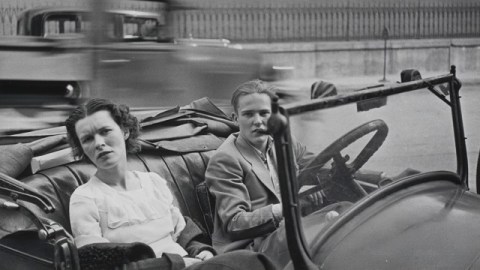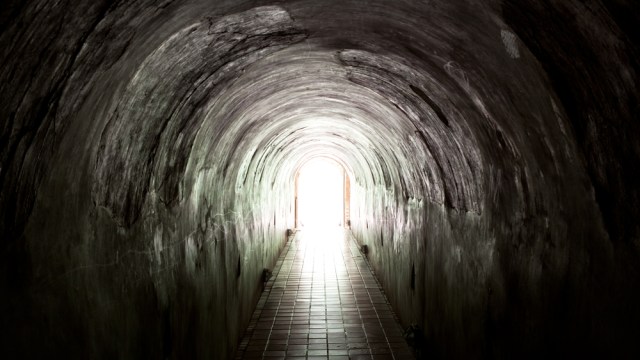Why Walker Evans’ American Photographs Feel Like Déjà Vu

Seventy-five years ago, The Museum of Modern Art staged their first exhibition devoted to the work of a single photographer—Walker Evans: American Photographer. That show brought together many of Walker Evans’ photographs done for the Farm Security Administration (FSA) to record life during the Great Depression. With Walker Evans: American Photographs, which runs through January 26, 2014 at the MoMA, it’s déjà vu all over again as America finds itself mired in another economic crisis and Evans’ art holds up a mirror. As apolitical as Evans himself, Evans’ photos show an America of the past that looks and feels like the America of today, while also giving a message of hope for the future.
“I never took it upon myself to change the world,” Evans once remarked. “And those contemporaries of mine who were going around falling for the idea that they were going to bring down the United States government and make a new world were just asses to me.” Evans let his photos do the talking. Or, more accurately, he let the subjects shown in his photos do the talking, whether they were people or the buildings where those people lived and worked. In 1941, Evans published with writer James Agee the monumental book Let Us Now Praise Famous Men, which depicted white tenant families in southern Alabama during the Great Depression to tell the larger story of America at that time. But 3 years before Let Us Now Praise Famous Men, Evans was already praising the common man and woman through his photography in the MoMA show.
There’s a beautifully eerie quality to Evans images of people-less homes, businesses, and even churches. It’s as if we just missed the bustle of human activity, or have arrived too soon. Although nearly eight decades separate these photos from us today, with only a few adjustments in style and fashion you could mistake them for our country today. Photos such as Houses and Billboards in Atlanta(1936) and Roadside Gas Sign(1929) show us the beginnings of the proliferation of advertising in America that pollutes nearly every scene today like a NASCAR chassis. (A picture of a Minstrel Showbillfrom 1936 reminds us of the civil rights situation of the Great Depression simmering below the historical surface, and for a moment recalls the recent Voting Rights Act decision as a case of the present not differing that much from the past.) View of Easton, Pennsylvania(1936), Birmingham Steel Mill and Workers’ Houses(1936), and Roadside View, Alabama Coal Area Company Town(1936), among other images, remind us of America’s manufacturing past and how so many of those mills and factories now lay idle. A whole economic treatise could emerge from these photos, but Evans simply reports—you decide.
As striking as these urban and rural landscapes are, it’s the faces Evans captured that cut deepest into the memory with their odd contemporariness. 1937’s Arkansas Flood Refugeecould just as easily be a refugee from Hurricanes Katrina or Sandy. The men sitting idly by a doorway in South Street, New Yorkfrom 1932 could easily be the homeless of today. Evans’ Alabama Cotton Tenant Farmer Wife(1936), with her tight, pinched mouth and steely, unwarvering eyeing of Evans’ camera, looks much like many Americans today feeling the vice grip of economic trial. The confused, almost angry couple shown in Parked Car, Small Town Main Street (1932; shown above) resemble remarkably the confused, angry-at-everything looks of many people today beset by a barrage of foreclosures, job losses, and business shutterings that seemingly fell out of nowhere on people who thought they were playing by the rules. In the same year as the original MoMA show, Evans began taking pictures of people riding the New York subway with a camera hidden under his coat (collected in 1966 in the book Many are Called) just to capture this off-guard psychological truthfulness. Calling on the American people with his camera, Evans found they had volumes to say that even they couldn’t imagine both for themselves and us today.
The MoMA makes much of the modern placement of the show on the 4th floor of their building, beside work by Andy Warhol, Jackson Pollock, Robert Rauschenberg, Jasper Johns, and others, to “underscore the continuation of prewar avant-garde practices in America.” There’s value in gauging Evans’ modernist credentials (1936’s Main Street Block, Selma, Alabama looks so much like an Edward Hopper painting, you wonder who was influencing whom), but the real value for me in Walker Evans: American Photographs lies in how it acts as an advance guard from the past for us today. In his essay for the original exhibition catalog (reissued for the new show), Lincoln Kirstein praised Evans photographs’ “clear, hideous and beautiful detail, their open insanity and pitiful grandeur” ability to make us “compare this vision of a continent as it is, not as it might be or as it was, with any other coherent vision that we have had since the [first world] war. What poet has said as much? What painter has shown as much?” With an unflinching vision of America as it is, not as it was or might be, Evans provides a template for Americans to envision clearly who we are today. With the hindsight of 75 years, however, and almost contradictory to Evans’ original intent, Walker Evans: American Photographs does provide a vision for the future of sorts purely through the knowledge that the people and places in these pictures not only survived the Great Depression but later thrived in what became “the American century.” If they could do it, Evans pictures challenge us today, so can we.
[Image:Walker Evans (American, 1903–1975). Parked Car, Small Town Main Street. 1932. Gelatin silver print. 5 1/2 x 8 15/16″ (14 x 22.7 cm), printed c. 1970 by James Dow. Lily Auchincloss Fund. Credit: The Museum of Modern Art. © 2013 Walker Evans Archive, Metropolitan Museum of Art.]
[Many thanks to The Museum of Modern Art for the image above and press materials related to Walker Evans: American Photographs, which runs through January 26, 2014.]





